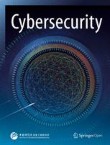The Institute of Information Engineering (IIE) is a national research institute in Beijing that specializes in comprehensive research on theories and applications related to information technology.
IIE strives to be a leading global academic institution by creating first-class research platforms and attracting top researchers. It also seeks to become an important national strategic power in the field of information technology.
IIE’s mission is to promote China’s innovation and industrial competitiveness by advancing information science, standards, and technology in ways that enhance economic security and public safety as well as improve our quality of life.
